
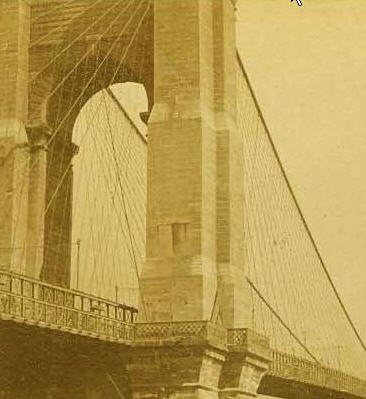 |
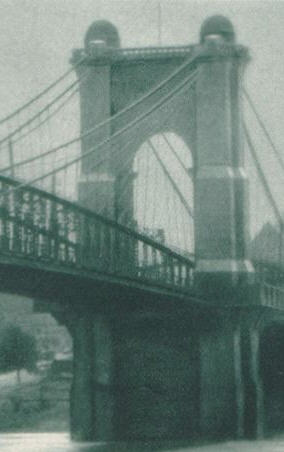 |
| One of the ways you can date bridge pictures is by the number of suspending cables. Wilhelm Hildenbrand engineered a re-build of the bridge in 1895-1899 (There was concern about the weight of street cars. Horse drawn cars weighed 4 tons; electric street cars weighed 20 tons). Among other changes, he installed a second suspending cable. Older pics (left) have a single cable; newer pics (right) have two. The newer cable is the one on top; the lower cable is still Roebling's original. | |
![]()
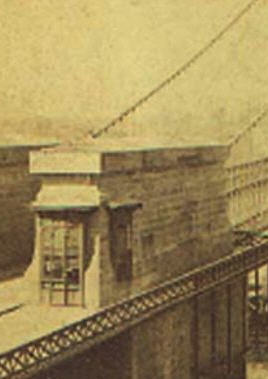 |
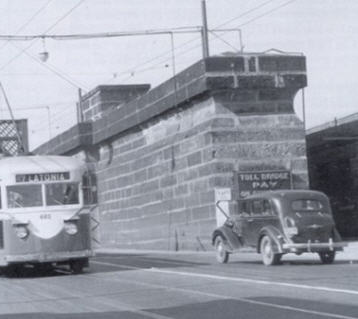 |
| These stone structures are anchorages, so-called because those giant cables holding up the bridge are anchored here. The cables go down thirty feet into these anchorages. The Hildebrand rebuilding, and its addition of the second cable, required an extension of these anchorages on the Kentucky side, and an additional set of anchorages on the Ohio side. They're shorter in old bridge scenes. | |
![]()
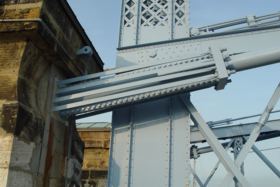 |
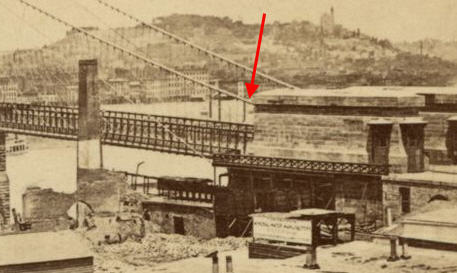 |
| In 1891, it was determined that the cables inside the anchorages were corroding. Roebling believed that if he buried his cable ends in concrete, they'd be safe from corrosion. He was wrong. Engineer Gustave Bouscaren, whose family lived in Bracht, in southern Kenton County, took on a project to completely dig out the cables from the concrete to address the issue. He also added giant clamps on each side and each end of the bridge to firmly keep the cables in place. That's one of the clamps on the left; their location indicated by the red arrow on the right. Bouscaren's friction clamps connect inside the anchor houses to the pins thru the cable chains. This insures that the stresses from the cables are totally transferred to the chains and thus to the anchor plates. Bouscaren's clamps are still there today. | |
![]()
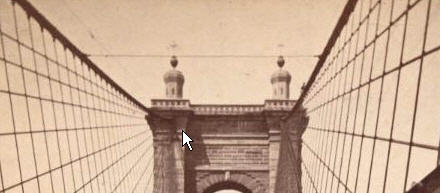 |
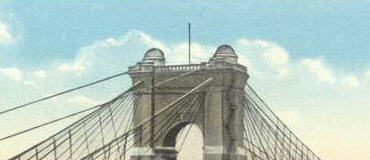 |
| Those things on top of the towers are called “saddle houses,” because the cables ride them like a saddle. Hildenbrand added the domed saddle houses, right, to accommodate the second cable. A modern remodeling project has modified the saddles to revive the original look. | |
![]()
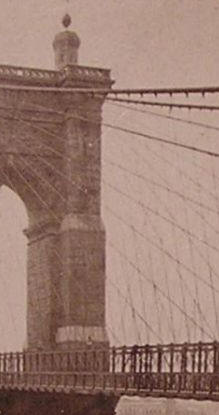 |
 |
| Yet another feature of the Hildebrand redesign was the movement of the vertical wires. Roebling's design had cables spaced evenly, five feet apart (left); Hildenbrand moved most of them closer together, and put them into groups of three, but the groups of three were further apart. The cables in the groups of three today are Roebling's original cables on the outside of the group of three; Hildenbrand added a newer, slightly larger cable between them. | |
![]()
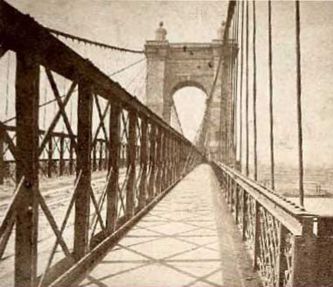 |
 |
| Another feature of the Hildebrand redesign was the addition of stronger trusses - we put a red arrow on it above. The original (left) had a railing, but the new trusses add much more strength. Hildebrand pretty much built a truss bridge inside a suspension bridge. | |
![]()
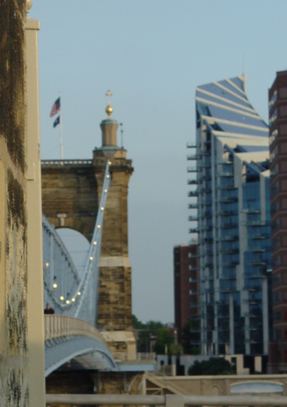 |
 |
| Did you ever notice that the bridge is wider at the top than at the deck level? That's
intentional, and keeps the bridge from swaying side to side. |
|
![]()
 |
| See that little ledge at our red arrow? The bridge towers are solid below that ledge, but have a hollow interior section above it. How to get into it? That red arrow is pointing to a door, which was the sole access to the top of the bridge before the stairs were added. There's a door in both towers, on the east sides. |
![]()
 |
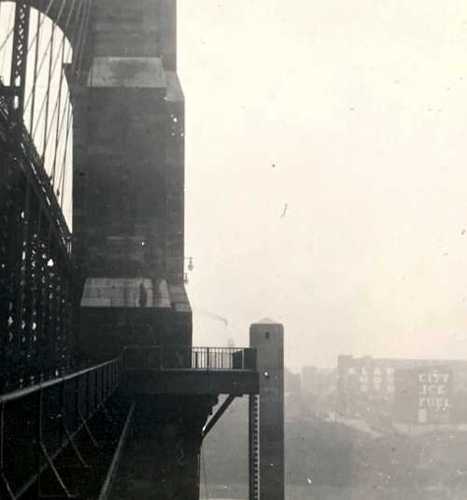 |
| This curious column is on the west side of the North tower. The shaft houses equipment used to measure the height of the Ohio River. What's North Dakota have to do with it? | |
![]()
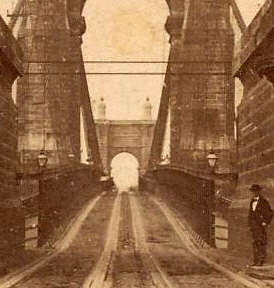 |
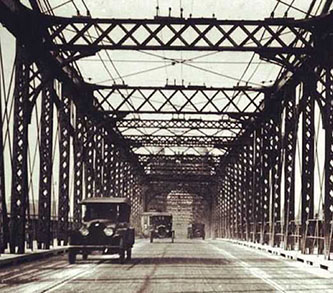 |
| The floor of the bridge was originally wooden, as seen in the above pics. Hildenbrand replaced Roebling's wooden floor with his own wooden floor. The open-grated steel floor was installed by the Kentucky Department of Highways at some point after the Commonwealth purchased the bridge in 1953. Because steel grating is lighter than solid wood. | |
![]()
| Some of the large stones in the bridge piers were originally cut for an aborted, half-built lock and dam system along the Licking, that ran out of funding and was abandoned. |
![]()
Thanks to Ralph G. Wolff for updating some of the original information on this page.
![]()